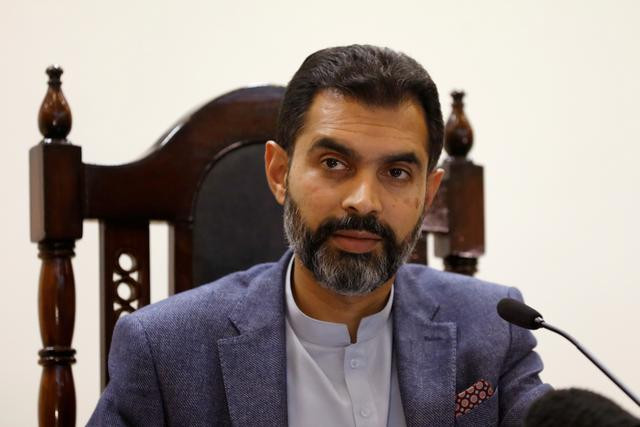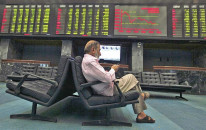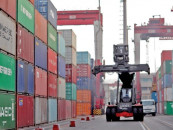SBP expects 3% growth in FY21
Central bank governor says country has entered third wave with much better economic indicators

Pakistan's central bank has remained confident that the country's economy will grow 3% in the current fiscal year despite facing a third wave of Covid-19.
Pakistan has entered the third wave of the pandemic with much improved economic indicators compared to weaker signs when the first wave hit the country almost a year ago, said State Bank of Pakistan (SBP) Governor Reza Baqir.
Addressing a gathering at the Pakistan Stock Exchange (PSX) on Monday, he said, "We will tackle the third wave successfully."
The International Monetary Fund (IMF) has recently projected that Pakistan's gross domestic product (GDP) will grow 1.5% in the current fiscal year, which is half the central bank's projection of 3% for the year. The World Bank has anticipated a growth of 1.3% in FY21.
Shedding light on the economic indicators, Baqir said that remittances sent home by overseas Pakistanis remained strong above $2 billion for the 10th successive month in March.
Remittances surged 43% to $2.7 billion in the month.
The large-scale manufacturing (LSM) sector posted a growth of 9% in January (before the third wave of Covid-19) compared to negative growth of 5.7% in the same month of last year when the first wave hit the country, he said.
Sales of cars, cement, steel and fast moving consumer goods (FMCGs) have remained robust before the third wave compared to sluggish sales at the time of first wave.
The government and the central bank's fiscal and monetary policies as well as stimulus have helped the economy to grow this year compared to contraction in the last fiscal year.
However, the high debt-to-GDP ratio remains a constraint on extending a larger fiscal stimulus package to support the economy, laid-off workers and daily-wage earners.
The central bank has injected liquidity into the system equivalent to 5% of GDP through monetary policy measures to support the economy and employment in the country, he said.
Industrialists have got approved bank financing worth Rs450 billion through a cheaper financing scheme - the Temporary Economic Refinance Facility (TERF) - over the last one year. New investment for industrialisation comes to around 1% of GDP.
He said that the central bank remained available to extend its support to the stock market, adding that the central bank was working on regulations to develop a secondary debt market at the PSX.
Overseas Pakistanis were investing in the PSX through the central bank's initiative of Roshan Digital Account (RDA), he added.
"We are entering the third wave of Covid with strong economic indicators…(partly) due to the well-coordinated fiscal and monetary measures and stimulus given immediately after the first wave hit the country (in February 2020)," he said.
The SBP governor said, "In the next fiscal year, the GDP is estimated to grow by over 4%."
The high debt-to-GDP ratio remains a challenge in the economy. "Pakistan's public debt, by international standards and by emerging market standards, is high," he said.
"Therefore, due to this high ratio, we have constraints on the ability of the government to give a larger fiscal stimulus. A larger stimulus may cause a further increase in public debt and concerns how we would repay the debt. That's why we have to keep such things in our mind while dealing with the crisis."
Accordingly, Pakistan has the smallest increase in the debt-to-GDP ratio compared to other emerging markets during Covid-19 despite giving fiscal stimulus through the Ehsaas programme.
Also speaking on the occasion, PSX CEO Farrukh Khan said, "Pakistan's stock market is one of the best performing markets in Asia today. This is in large part due to the proactive and aggressive monetary, fiscal, social and other measures taken by you (the SBP governor) and the government."
Pakistan's capital market needs to be and can be much larger and deeper than it is today. It can play a significant role in documenting the economy, increase savings and increase investment. "A large and liquid stock market is a prerequisite for a modern economy," he said.


















COMMENTS
Comments are moderated and generally will be posted if they are on-topic and not abusive.
For more information, please see our Comments FAQ